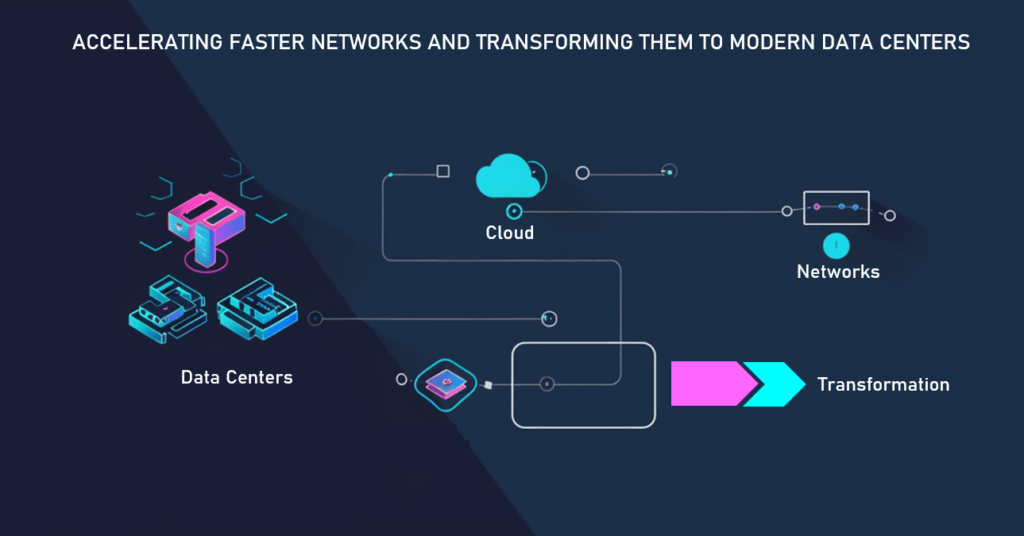Data centers and faster networks have increasingly become symbiotic as technology advances. This synergy is not merely about achieving higher speeds or lowering latency; it represents a fundamental shift in how businesses operate and innovate in the digital age. So, now let us see the benefits of converting networks to modern data centers along with Accurate Mobile Network Monitoring Tools, Mobile Network Drive Test Tools, Mobile Network Testing Tools and Accurate LTE RF drive test tools in telecom & Cellular RF drive test equipment in detail.
At the heart of this transformation lies the concept of data transmission speed. With service providers now offering speeds ranging from hundreds of megabytes to gigabytes, the possibilities for real-time data processing and communication have expanded exponentially. This surge in network speed has profound implications for businesses across industries, enabling them to deliver seamless and immersive experiences to customers.
One of the key beneficiaries of faster networks is the entertainment industry, where high-definition streaming services have become the norm. Thanks to the blazing-fast speeds offered by modern networks, consumers can now enjoy crystal-clear video and audio without the frustration of buffering or lag. This has revolutionized the way content is consumed, paving the way for new revenue streams and business models.
Moreover, faster networks have unlocked a plethora of opportunities in the realm of IoT (Internet of Things). With the proliferation of connected devices—from smart appliances to industrial sensors—businesses can now gather and analyze vast amounts of data in real-time. This data-driven approach enables organizations to optimize operations, enhance efficiency, and deliver personalized experiences to customers.
In the context of data centers, the impact of faster networks is particularly pronounced. Traditionally, data centers have served as centralized hubs for storing and processing data. However, the advent of edge computing has challenged this paradigm by bringing computing resources closer to the source of data generation.
Edge computing represents a paradigm shift in data center architecture, enabling organizations to process data locally at the edge of the network, rather than relying on centralized data centers. This distributed approach not only reduces latency and bandwidth usage but also enhances scalability and resilience. By deploying mini data centers or edge nodes closer to end-users, businesses can deliver low-latency services and applications, thereby improving the overall user experience.
Furthermore, the adoption of edge computing opens up new possibilities for innovative applications and services. For example, in the healthcare industry, edge computing can enable real-time monitoring of patient vital signs and early detection of medical emergencies. Similarly, in the retail sector, edge computing can facilitate personalized shopping experiences based on real-time inventory data and customer preferences.
In addition to edge computing, advancements in network slicing are reshaping the design of data centers. Network slicing is a technique introduced in 5G networks that allows operators to create virtualized network slices tailored to specific use cases. For instance, operators can allocate dedicated network slices for applications such as autonomous vehicles, smart cities, and industrial IoT. This granular approach to network management enables organizations to optimize network resources and ensure reliable connectivity for mission-critical applications.
The convergence of faster networks and modern data centers is also driving innovation in data center technology. Traditional data center architectures are being reimagined to meet the demands of high-speed networks and real-time data processing. Technologies such as SmartNICs (Smart Network Interface Cards) are playing a pivotal role in offloading processing tasks from the CPU to the network interface, thereby improving overall system performance and efficiency.
Moreover, accelerators such as GPUs (Graphics Processing Units) and FPGAs (Field-Programmable Gate Arrays) are being deployed in enterprise and hyperscale data centers to enhance data processing performance. These accelerators enable organizations to handle complex computational tasks such as machine learning, AI, and real-time analytics with unprecedented speed and efficiency.
Another key technology driving innovation in data centers is NVMe (Non-Volatile Memory Express). NVMe is a storage interface protocol designed to accelerate access to SSDs (Solid State Drives) in servers. By minimizing CPU overhead and reducing latency, NVMe enables organizations to process large volumes of data with minimal latency, making it ideal for applications requiring real-time data processing and analysis.
Furthermore, automation and AI are poised to revolutionize data center operations, enabling organizations to streamline routine tasks and improve overall efficiency. AI-driven systems can autonomously monitor server performance, detect anomalies, and optimize resource utilization in real-time. This level of automation not only improves operational efficiency but also enhances the reliability and resilience of data center infrastructure.
In summary, the convergence of faster networks and modern data centers represents a paradigm shift in how organizations leverage technology to drive innovation and remain competitive in the digital age. By embracing cutting-edge technologies such as edge computing, network slicing, and data center acceleration, businesses can unlock new opportunities for growth, efficiency, and agility. As the pace of digital transformation accelerates, the role of faster networks and modern data centers will only continue to expand, shaping the future of technology and business alike.







More Stories
Leaning the Digital Frontier: Cybersecurity, IT Consulting, and AI for Dubai Companies
Sconvolgere and Mutare with 5G Network Tester & RF Drive Test Software
Cisco Business 350 Series: A Bundle Of Poe Network Switches